Top Photo: Ripe thorny olive drupes.
In January, on this blog, I mentioned the fruit of thorny olive. It was not quite ripe at the time. The fruit is now ripe and can be eaten. It’s a bit on the tart side (be forewarned before picking and eating). Some people prefer a sweet fruit, some like it tart. This is tart.
Thorny olive (Elaeangus pungens) is not native, is considered invasive and has two relatives in the area that share its status, autumn olive (Elaeangus umbellata) and Russian olive (Elaeangus angustifolia). Both of those plants are shrubs. Both bloom in spring and fruit in summer. Autumn olive is well represented on campus.
Thorny olive, which often grows right up the sides of trees, blooms in fall and bears fruit in late winter, right now.
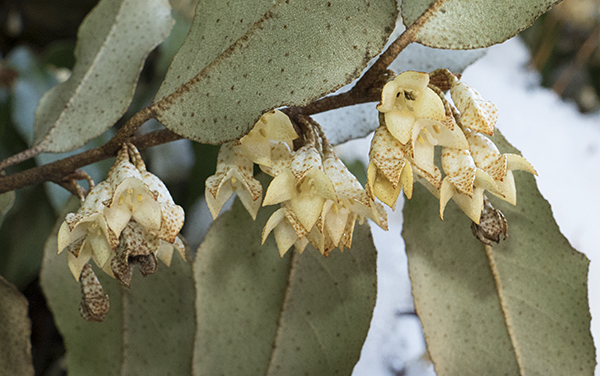
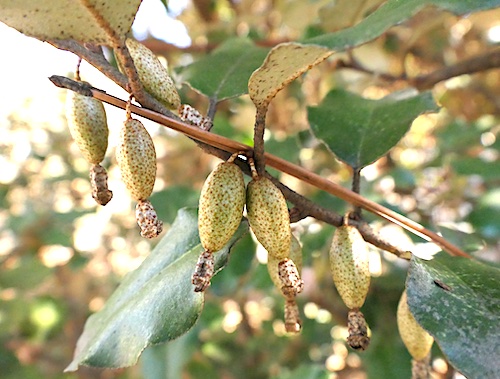
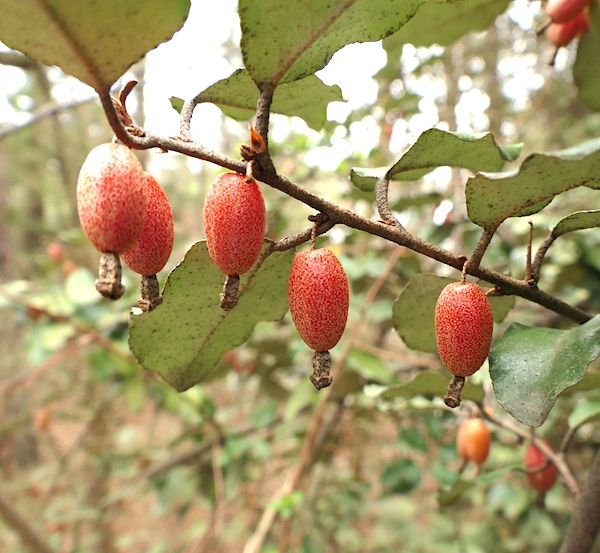
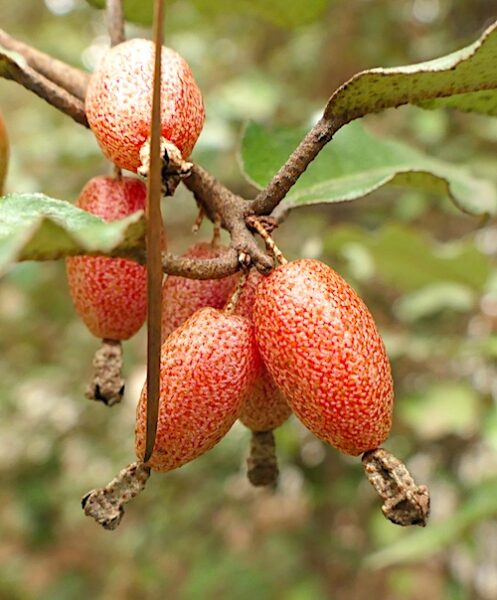
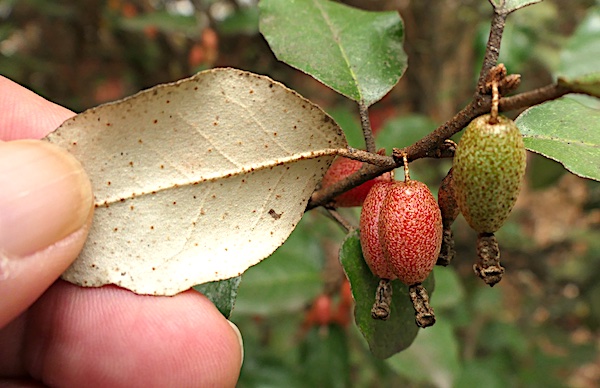

The thorny olive is located on the main path adjacent to the Farm Yard, midway between the two entrances to the farm animals.